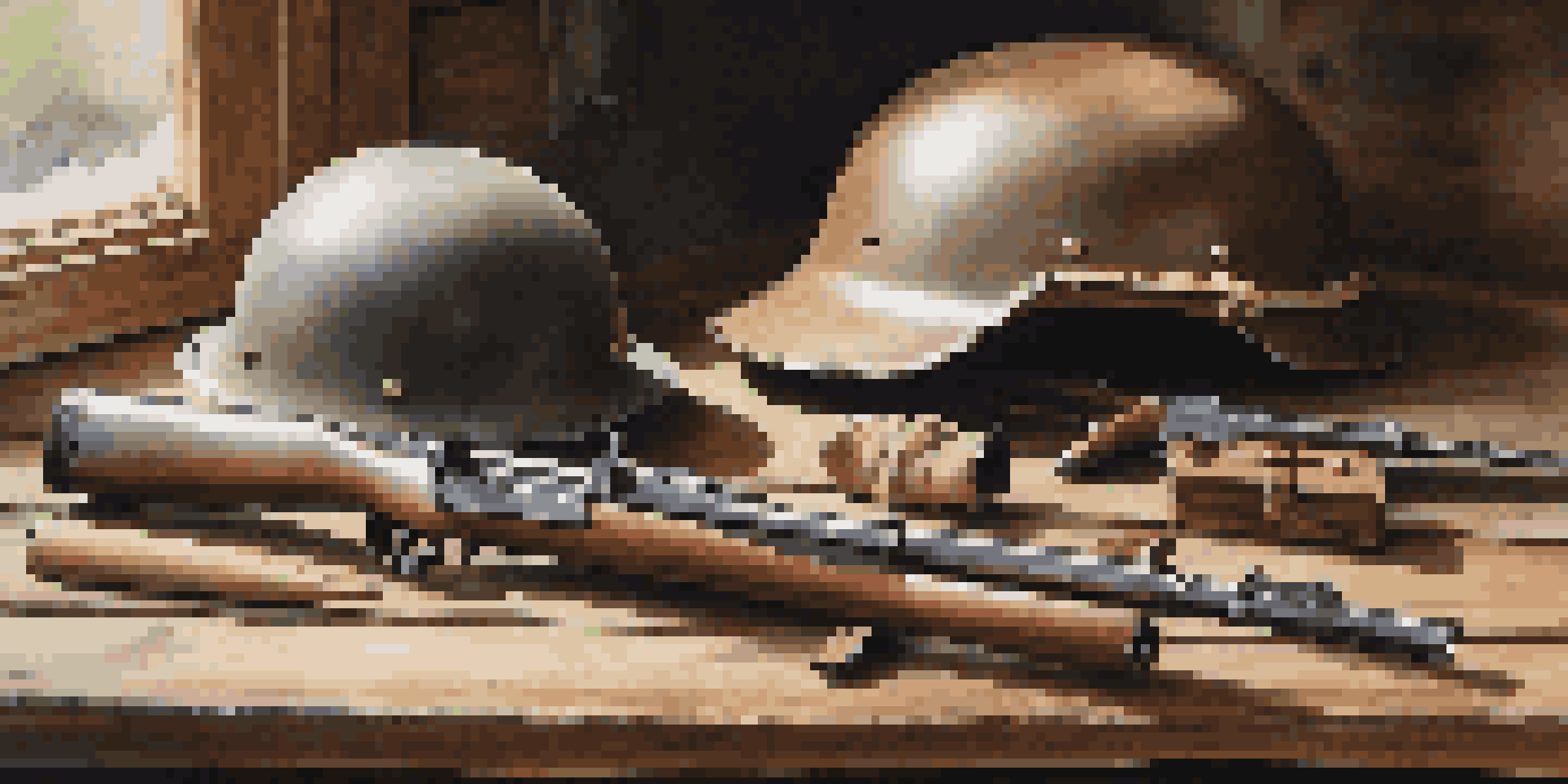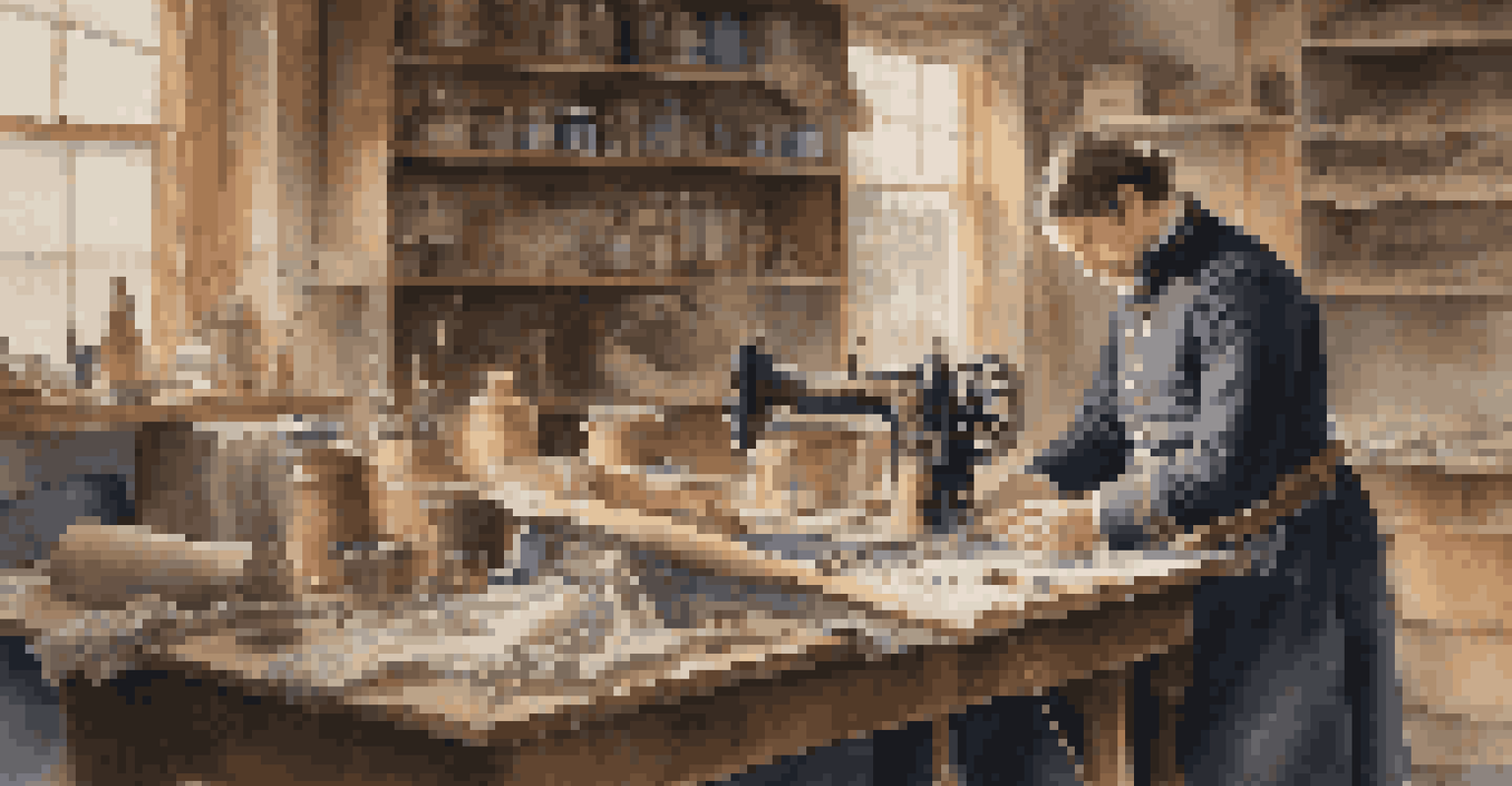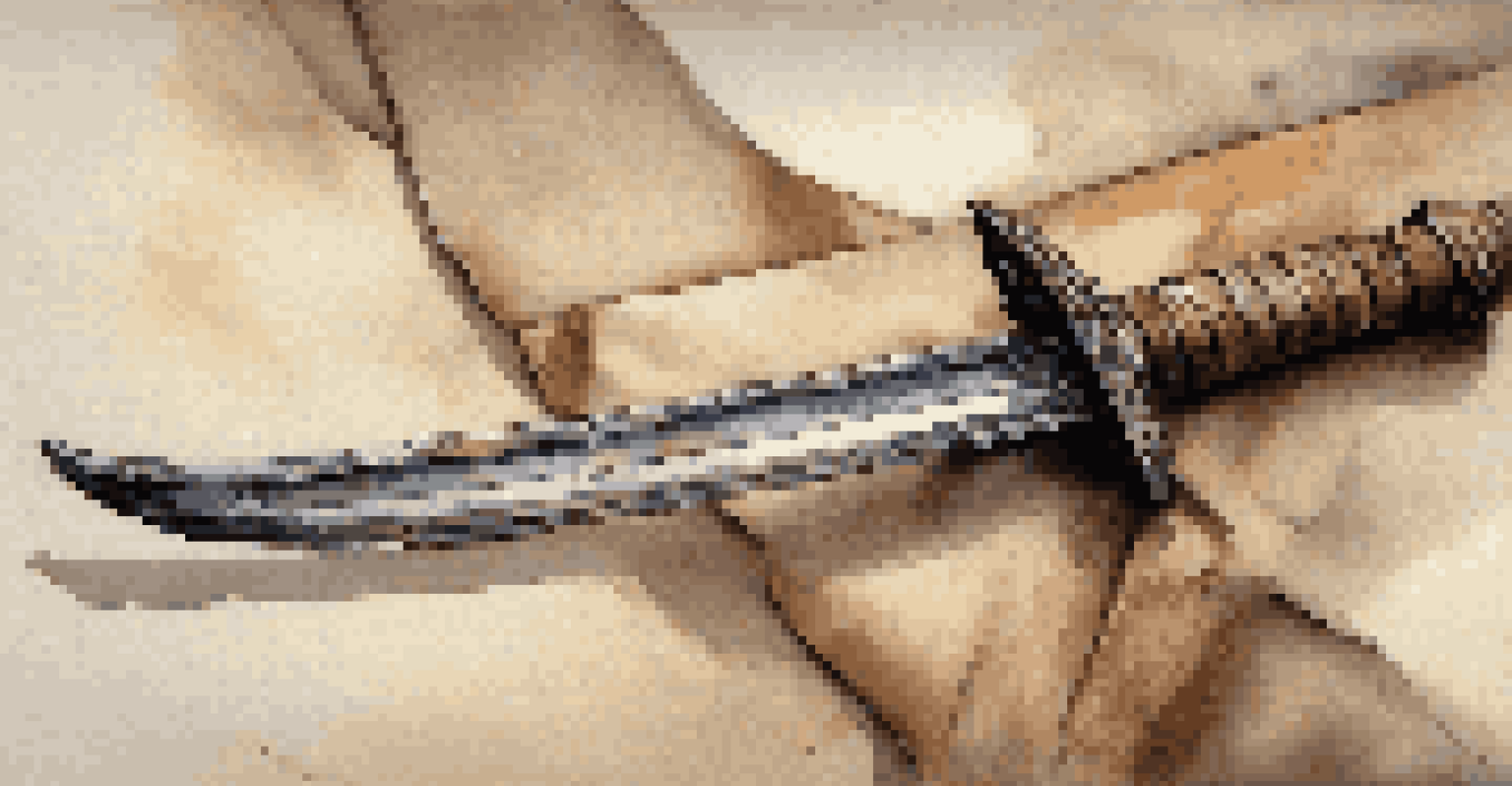Crafting Period-Appropriate Props for Reenactments

Understanding the Importance of Authenticity in Reenactments
Authenticity is the backbone of any reenactment, allowing participants to immerse themselves fully in the historical period. When props are period-appropriate, they enhance the storytelling aspect, making history come alive for both participants and spectators alike. For instance, a World War II reenactor wielding a replica rifle instead of a modern one adds depth to the experience, making it more engaging.
History is not a burden on the memory but an illumination of the soul.
Moreover, using accurate props fosters a sense of respect for the history being portrayed. It shows that reenactors value the stories and struggles of those who lived through those times. This commitment to authenticity can also inspire others to learn more about the era, thereby expanding the educational impact of the reenactment.
In essence, crafting period-appropriate props is not just about aesthetics—it's about honoring the past and enhancing the overall experience. By paying attention to details, reenactors can create a more profound connection with history.
Researching Historical Accuracy: Where to Start
Before diving into crafting props, it's crucial to conduct thorough research to understand the period you wish to portray. This involves looking into various sources, including books, documentaries, and even visiting museums. Engaging with historical communities online can also provide valuable insights and resources.

For instance, if you're focusing on the American Civil War, consider studying uniforms, tools, and everyday items used during that time. Websites dedicated to historical reenactment often have forums where you can ask questions and get advice from seasoned reenactors. This collaborative approach can help ensure that your props are as accurate as possible.
Authenticity Enhances Reenactments
Using period-appropriate props allows participants to immerse themselves in history, making the experience more engaging and educational.
Additionally, don't underestimate the power of visual aids. Photographs, paintings, and artifacts can provide a wealth of information about the materials, colors, and designs of the time. By combining various research methods, you'll build a solid foundation for crafting your props.
Selecting Materials: Authentic vs. Modern Alternatives
When crafting period-appropriate props, the choice of materials can significantly influence the authenticity of your creations. Whenever possible, opt for materials that reflect the period accurately, such as wood, leather, or metal. For example, a wooden sword may feel more authentic than a plastic one, even if the latter is lighter and easier to handle.
The only thing new in the world is the history you do not know.
However, it's essential to balance authenticity with practicality. Sometimes, modern materials can serve as effective substitutes, especially if they replicate the look and feel of historical items. For instance, using a high-quality resin for a decorative piece might be more durable than a fragile glass replica, while still providing the desired visual effect.
Ultimately, the goal is to create props that not only look authentic but also function well in a reenactment setting. By carefully selecting your materials, you can enhance both the authenticity and usability of your props.
Techniques for Crafting Realistic Props
Once you've selected your materials, it's time to dive into crafting techniques. Depending on the prop, you may need to use woodworking, sewing, or metalworking skills. For instance, if you're creating a period-appropriate pouch, sewing leather pieces together may be the way to go, while a wooden shield might require carving and sanding.
Don't hesitate to explore tutorials and workshops that focus on historical crafting techniques. Many online resources provide step-by-step guides for creating specific items, which can be incredibly helpful for beginners. Engaging with the crafting community can also inspire new ideas and techniques.
Research is Key to Accuracy
Thorough research into historical materials and techniques is essential for crafting accurate and respectful props for reenactments.
Additionally, take your time to practice and experiment with different methods. Crafting is often a process of trial and error, and honing your skills will lead to better results. Remember, the more effort you put into crafting your props, the more authentic and impressive they'll be during reenactments.
Finishing Touches: Aging and Weathering Your Props
To truly capture the essence of a bygone era, adding finishing touches like aging and weathering can make a significant difference. These techniques help to create the illusion of wear and tear, reflecting how objects would have looked after years of use. For example, lightly sanding the edges of a wooden prop can mimic the effects of handling and exposure to the elements.
You can also use paints and stains to achieve an aged appearance. Applying a dark stain can give wood a rich, historic look, while a bit of dry-brushing can add highlights to metal pieces. Just remember to research the specific techniques used during the period to ensure you're on point.
Ultimately, these finishing touches can elevate your props from good to great, making them stand out during reenactments. By investing time in aging your props, you not only enhance their visual appeal but also reinforce their historical significance.
Safety Considerations When Crafting Props
While crafting can be an enjoyable and fulfilling activity, it's essential to prioritize safety throughout the process. Always wear appropriate safety gear, such as goggles and gloves, especially when working with sharp tools or hazardous materials. For example, when cutting wood or handling metal, taking these precautions can prevent accidents and injuries.
Additionally, consider the safety of the props themselves during reenactments. Ensure that any weapons or tools are safe to handle, particularly if children or inexperienced participants are involved. Using foam replicas instead of metal swords can help maintain a fun and safe environment.
Safety Should Be Prioritized
Ensuring safety during the crafting and use of props is crucial to protect yourself and create a safe environment for all reenactors.
By keeping safety at the forefront of your crafting process, you can enjoy the creative aspects while minimizing risks. This approach not only protects you but also ensures that everyone involved in the reenactment can participate safely and confidently.
Sharing Your Craft: Showcasing Props at Events
Once you've crafted your period-appropriate props, it's time to share your hard work with the reenactment community. Participating in events and festivals provides a fantastic opportunity to showcase your creations, allowing others to appreciate your dedication to authenticity. Engaging with fellow reenactors can also foster connections and inspire new ideas for future projects.
Consider setting up a small booth or display at events to attract attention to your props. Providing information about the crafting process and the historical significance of your items can spark interest among onlookers. Sharing your journey not only highlights your skills but also enriches the experience for everyone involved.

Moreover, documenting your crafting process on social media platforms can help you reach a broader audience. By sharing photos and stories, you can inspire others to take up crafting for reenactments, creating a vibrant community of history enthusiasts.